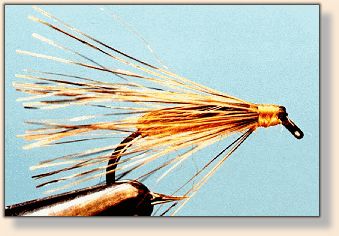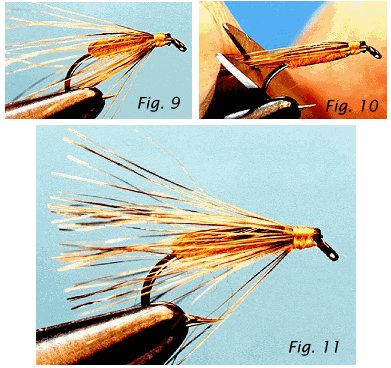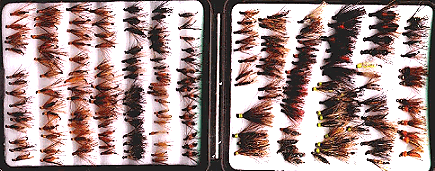
 SHWAPF By Al Campbell
|
|
|
(swept hackle, wingless, all purpose fly)
|
|
Materials
|
|
Tying Steps:2. Tie no-dub to the hook. Again, tie this material down all the way to the hook bend.
 3. Leaving the thread to the back, wrap the no-dub forward, leaving room for the head of the fly. 4. Bring the thread forward in front of the no-dub, over the hook, then over the no-dub to tie the no-dub off. Make several wraps of thread before you trim the no-dub. 5. Pull the hair forward over the back of the fly. Tie the hair down behind the hook eye. A slight upward pressure on the hair will keep it on top of the fly as you tie it down.
 6. Tie the hair down to the hook right behind the hook eye. 7. Fold the hair back with your thumb and fingers. Try to get the hair to flair completely and evenly around the fly. 8. Build the head up slightly and trim or tie down any loose strands of hair. 9. Finishing building a small, even head. Whip finish and cement. 10. Trim the hair behind the hook bend.
 11. Your finished shwapf should look like Figure 11.
Fishing Suggestions:
Editors Note:
|
